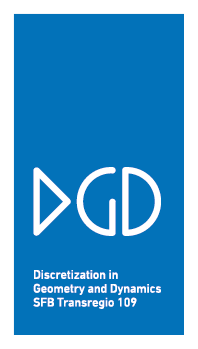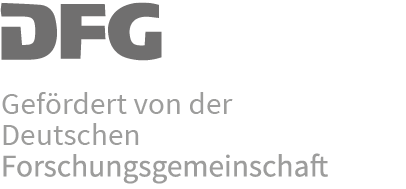Many processes in geometry and dynamics can be considered as time dependent systems. For instance, dynamic geometry studies elementary geometric constructions in which the base elements of a construction may be moved and the dependent elements move accordingly and consistently. Such a movement may be considered as a process in time. In physics there are also time-dependent processes. One may think of a planet orbiting around a sun or an arrangement of atoms moving under mutual forces.
Both systems - moving geometric constructions and particle/force systems - suffer from the fundamental problem that singular situations, which occur at a specific moment in time, may prevent the system from being continued beyond this moment. For example, the orbit of a planet, directly heading into a sun, is stopped at the moment of the collision.
The philosophy in research project B01 expands† the concept of an ordinary linear time flow to a concept in two dimensions, where the time is represented by a variable over the complex numbers. Complex numbers are inherently two-dimensional objects, but in many aspects they behave like ordinary numbers. In particular all formulas governing geometric constructions or force/particle systems allow direct generalizations to complex numbers. Now, figuratively speaking, the two-dimensional nature of complex numbers allows us to bypass critical singular situations by so-called complex detours. At first, this seems to be a purely esoteric approach to geometry and physics. However, this approach, which is a central element in the research in B01, creates possibilities for new, more stable and consistent methods in dynamic geometry as well as for physics simulations.
B01
Complexification of Discrete Time
How Complex Time Helps to Make Algorithms and Simulations More Stable
Time may not always be considered to be a linear flow. If a time dependent problem is regular enough one may replace a one-dimensional (real) time variable by a two-dimensional (complex) time variable. By this it suddenly becomes possible to bypass critical singular or nearly-singular situations and to broaden the practical applicability of simulations. The research goal of B01 is to exploit these detours in time for problems in dynamic geometry and elementary particle mechanics.
- Group: B. Dynamics
- Principal Investigator: Prof. Dr. Dr. Jürgen Richter-Gebert
- Investigators: Dr. Stefan Kranich, Dr. Katharina Schaar
- University: TU München
- Term: 2012 - 2016









